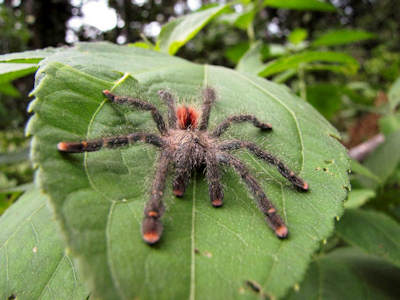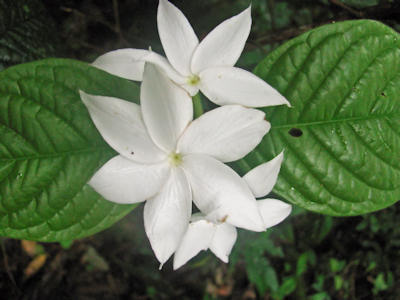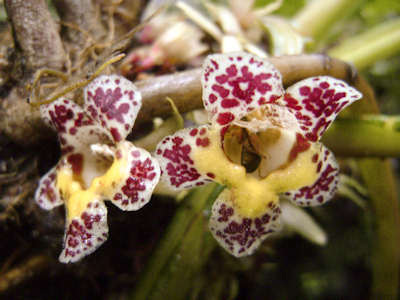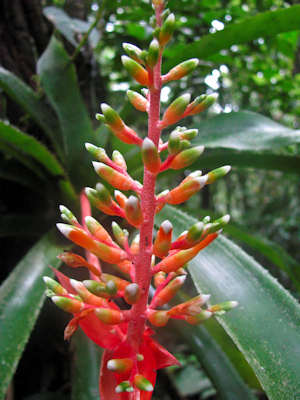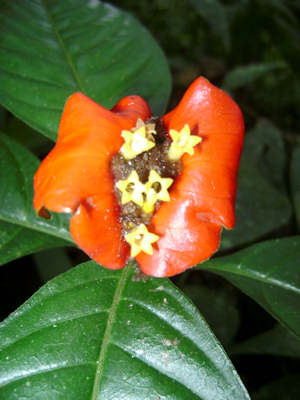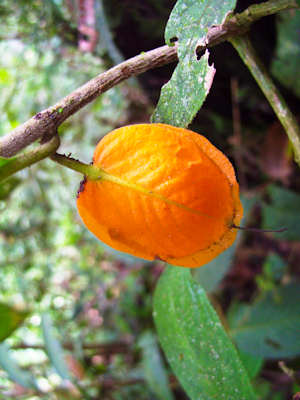Enjoy endless life diversity of forms and colors…
Fauna
In the vicinity of the southern area of Sumaco National Park, where RBBR is located, fauna diversity is particularly high. Close location of the Sumaco volcano (3732 meters), a mere ecological haven, is incrementing the chances of endemism amongst animals of the area.
Studies in the whole sector are scarce and there has never been a true and complete biodiversity's data recollection. Nevertheless, in some areas very close to RBBR, the following species have been registered:

Mammals: 101 species of mammals; including 35 species of bats and 18 species of rodents. Evidence of large size and endangered species have also been recorded, like jaguar (Panthera onca), puma (Puma concolor), tigrillo chico (Leopardus tigrinus), tapir (Tapirus terrestris), tigrillo (Leopardus pardalis), yaguarundi (Puma yagouaroundi), pecari (Pecari tajacu), long tailed tigrillo (Leopardus wiedii), among many others.

Amphibians: Around San Jose de Payamino Investigation Center, very close to RBBR, 22 species of amphibians were found, such as: sapo (Rhinella margaritifer), ranita de cristal (Cochranella midas), rana venenosa (Ameerega bilinguis), rana arboricola (Dendropsophus sarayacuensis), rana amazonica (Eleutherodactylus altamazonicus), rana verde neotropical (Lithobates palmipes).
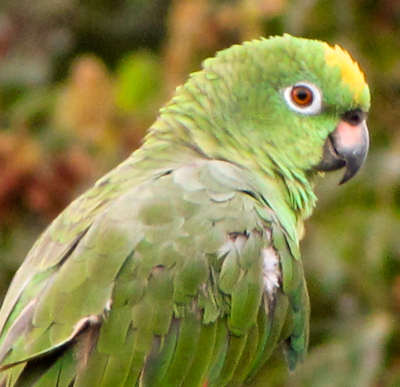
Birds: A study around San Jose de Payamino in 1999 registered the highest level of bird species in the world, with 840 species of birds in an area of 110 x 110 km#178;.
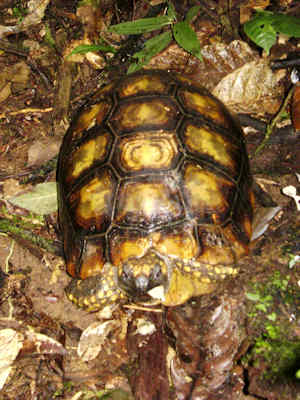
Reptiles: In the lower areas of Sumaco National Park, 36 species of reptiles were found, including snakes and tortoises.
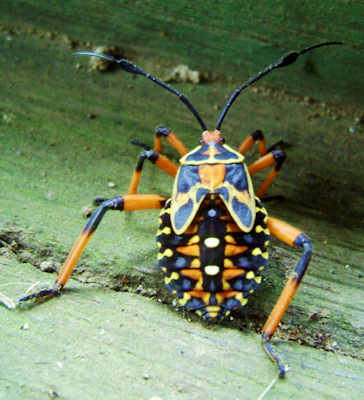
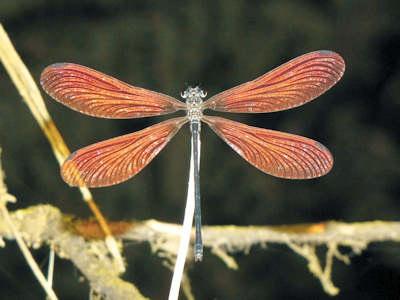

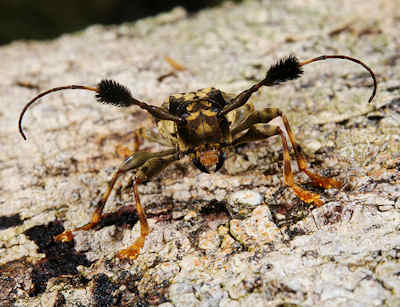
Arthropods: Many arthropods, especially insects that have short reproduction cycles, present endemic characteristics and endless variety.
Ictiofauna: Fish population, part of the Napo River ictiofauna, is one of the most diverse worldwide, with more than 470 species
